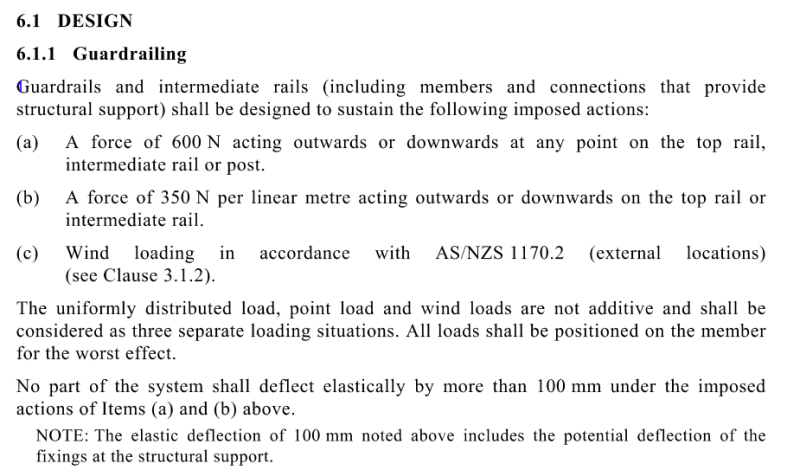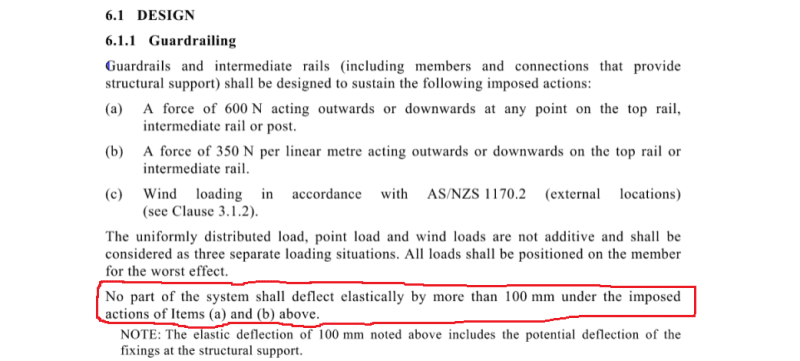Hey all
I am designing a Guard rail in Tampa, Florida and I did a lot of research to figure out the Deflection limitations but couldn't find actual solid resource.
can you please provide me the resource for the deflection limitation when I apply 50 PLF or 200 Lbs on the top rail or vertical post.
I am designing a Guard rail in Tampa, Florida and I did a lot of research to figure out the Deflection limitations but couldn't find actual solid resource.
can you please provide me the resource for the deflection limitation when I apply 50 PLF or 200 Lbs on the top rail or vertical post.


